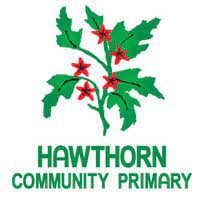Computing
Technology is everywhere and will play a fundamental part in students' lives both today and in the future. Therefore, we want to model and educate our pupils on how to use technology positively, responsibly and safely. We want our pupils to be creators not just consumers and our broad curriculum encompassing computer science, information technology and digital literacy reflects this. We aim for our pupils to understand that there is always a choice when using technology and as a school we utilise technology to model positive use. We recognise that education is the key for preventing many of the issues experienced by young people surrounding social media. Whilst ensuring they understand the advantages and disadvantages associated with online experiences, we aim for children to develop as respectful, responsible and confident users of technology, aware of measures that can be taken to keep themselves and others safe online.
Our aim is for all our pupils to develop their computational thinking skills and creativity. At the core of the Computing curriculum lies computer science. Our children will build on their knowledge using information technology skills and by becoming computer literate. Our school follows the Teach Computing scheme of work, which covers all aspects of the National Curriculum. This scheme was chosen as it has been created by subject experts and based on the latest pedagogical research.
We encourage staff to embed computing across the whole curriculum to make learning creative and accessible. We want our pupils to be fluent with a range of tools to best express their understanding so that by Upper Key Stage 2, children have the independence and confidence to choose the best tool to fulfil the task and challenge set by teachers.
Our curriculum aims to equip young people with the knowledge, skills and understanding they need to thrive in the digital world of today and the future. It is broken down into 3 strands: computer science, information technology and digital literacy, with the aims of the curriculum reflecting this distinction.
The national curriculum for computing aims to ensure all pupils:
-
can understand and apply the fundamental principles and concepts of computer science, including abstraction, logic, algorithms and data representation (Computer Science)
-
can analyse problems in computational terms, and have repeated practical experience of writing computer programs in order to solve such problems (Computer Science)
-
can evaluate and apply information technology, including new or unfamiliar technologies, analytically to solve problems (Information technology).
E-Safety and Digital Citizenship
Key to implementing our computing curriculum, is to ensure that safety of our pupils is paramount. We take online safety very seriously and we aim to give children the necessary skills to keep themselves safe online. Children have a right to enjoy childhood online, to access safe online spaces and to benefit from all the opportunities that a connected world can bring them, appropriate to their age and stage.
Children build online resilience through the use of the ‘Project Evolve – Education for a Connected World’ framework. The framework aims to support and broaden the provision of online safety education, so that it is empowering, builds resilience and effects positive culture change. The objectives promote the development of safe and appropriate long-term behaviours, and support educators in shaping the culture within their setting and beyond.
Within each year group topics include:
-
Self Image and Identity - This strand explores the differences between online and offline identity beginning with self-awareness, shaping online identities and media influence in propagating stereotypes. It identifies effective routes for reporting and support and explores the impact of online technologies on self-image and behaviour.
-
Online Relationships - This strand explores how technology shapes communication styles and identifies strategies for positive relationships in online communities. It offers opportunities to discuss relationships, respecting, giving and denying consent and behaviours that may lead to harm and how positive online interaction can empower and amplify voice.
-
Online Reputation - This strand explores the concept of reputation and how others may use online information to make judgements. It offers opportunities to develop strategies to manage personal digital content effectively and capitalise on technology’s capacity to create effective positive profiles.
-
Online Bullying - This strand explores bullying and other online aggression and how technology impacts those issues. It offers strategies for effective reporting and intervention and considers how bullying and other aggressive behaviour relates to legislation.
-
Managing Online information - This strand explores how online information is found, viewed and interpreted. It offers strategies for effective searching, critical evaluation of data, the recognition of risks and the management of online threats and challenges. It explores how online threats can pose risks to our physical safety as well as online safety. It also covers learning relevant to ethical publishing.
-
Health Well-being and Lifestyle - This strand explores the impact that technology has on health, well-being and lifestyle e.g. mood, sleep, body health and relationships. It also includes understanding negative behaviours and issues amplified and sustained by online technologies and the strategies for dealing with them.
-
Privacy and Security - This strand explores how personal online information can be used, stored, processed and shared. It offers both behavioural and technical strategies to limit impact on privacy and protect data and systems against compromise.
-
Copyright and Ownership - This strand explores the concept of ownership of online content. It explores strategies for protecting personal content and crediting the rights of others as well as addressing potential consequences of illegal access, download and distribution.
